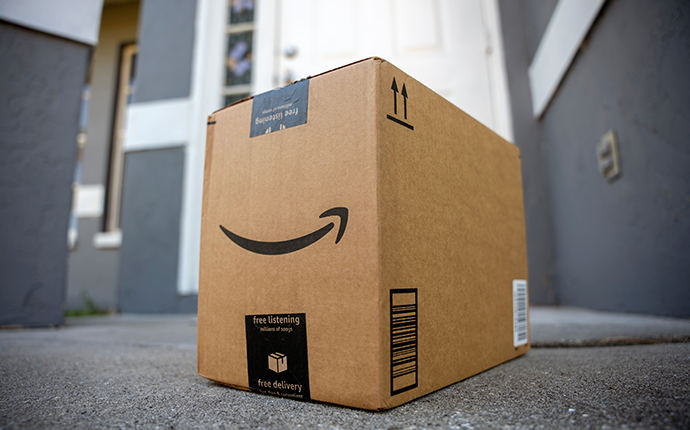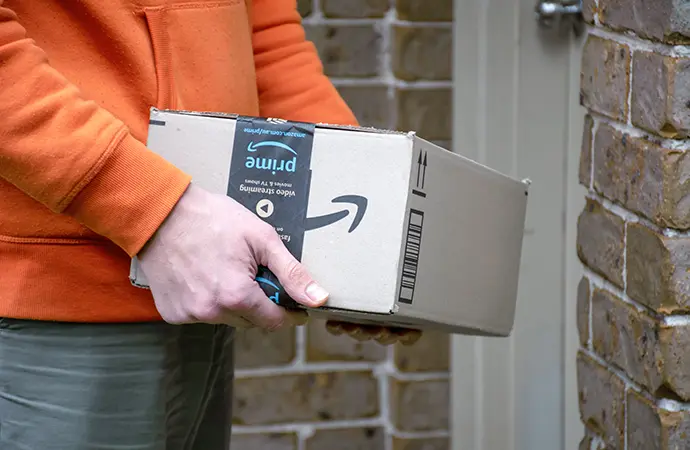Disruptions in the Parcel Sector
The COVID-19 pandemic led to vast eCommerce supply chain and delivery service disruption. Shippers witnessed a massive increase in demand for package delivery amid the shortage of many products in the market.
The surge in eCommerce packages created holiday “peak-like levels” of residential demand in March of 2020. UPS delivered over 21 million packages on average daily in the second quarter of 2020, whereas FedEx witnessed a 22.8% uptick in daily ground package volume from the previous year.
Major carriers like FedEx, UPS, and DHL responded to the expected demand for package deliveries by putting caps on the number of packages customers could send. They also suspended money-back guarantees on service-level agreements (SLAs) and raised rates and surcharges by $.30-$.90 per package, citing increased operational costs and labor constraints.
For shippers and customers, this meant paying substantially higher delivery costs going into the peak holiday season while also risking poor on-time delivery.
Since the COVID-19 pandemic, we’ve witnessed a growing trend toward regional parcel carriers. More and more businesses are implementing a multi-carrier strategy with big and small carriers.
In this article, we’ll discuss why a company might diversify its carrier mix to include regional carriers. We’ll also review the advantages and disadvantages of enlisting one to handle your last-mile delivery.
How Regional Parcel Carriers Alleviated the Issue
The increase in fees and surcharges had a cascading effect on pricing and service levels across delivery companies, contributing to a significant cost increase in last-mile delivery. Shippers rushing to save the holiday peak season turned to regional carriers as a viable parcel delivery solution.
Realizing how fragile their carrier networks were, many businesses diversified their shipping options to include regional and local carriers. Regional carriers are more flexible than national carriers, offer better rates for their areas, and provide faster delivery times, including two-day and next-day deliveries.
As a result, shippers reduced the financial burden of high shipping rates and offered faster delivery to their customers during the critical peak holiday season. It also enabled them to dodge the volume restrictions imposed by shipping services while avoiding surcharge triggers.
Popular regional shipping services include OnTrac, CDL Last Mile, United Delivery Service, LSO, and Lasership.
Regional carriers are not a substitute for major parcel delivery services. In fact, both carriers and shippers use regional delivery to supplement their existing last-mile capabilities.
How do regional parcel carriers operate?
Most of the time, when you ship an order to a customer, it is carried by one of the major parcel shipping companies like FedEx or the United States Postal Service (USPS) from your warehouse to the customer’s doorstep. These carriers allow you to send deliveries to any destination across the world.
On the other hand, regional parcel carriers only offer services in one or more specific regions. They provide a faster, lower-emission, more responsive, and cost-effective option for shippers who want to send small parcel and truckload deliveries within a limited radius.
However, note that many regions in the Midwest and West are not covered by any regional carrier. For this reason, include both regional and national carriers in your shipping strategy.
Benefits of Using Regional Parcel Carriers
Here are the top 3 benefits offered by regional carriers to shippers:
1. Lower shipping costs and surcharges
Regional carriers operate in small geographic territories, driving down their operating costs. As a result, they can pass these savings to customers by offering lower rates. Secondly, as they only move shipments between distribution centers and end customers, regional carriers are able to avoid extended transit times and fees.
Another reason regional parcel carriers reduce your shipping costs is that they charge lower fees for accessorial services like liftgates, and re-delivery of packages, compared to major carriers.
Even though regional carriers typically don’t charge delivery area surcharges, they may charge fuel surcharges to protect themselves from the ever-changing fuel costs.
2. Expanded parcel delivery capabilities
eCommerce brands are always looking for ways to compete with fast shipping offered by larger sellers to their customers.
You can provide expedited delivery to your customers using a regional carrier. As they operate in a smaller service area, regional carriers can cover shorter distances in less time, speeding up delivery. For this reason, you can offer next-day or even same-day delivery at cheaper rates than national carriers.
3. Greater flexibility
Regional carriers work with a smaller customer pool. This allows them to offer more personalized service and attention to their customers. For instance, shippers can directly reach out to the local carrier’s terminal for assistance. In contrast, national carriers usually have automated service helplines that lack the personal touch and ability to resolve complex issues.
Even though regional carriers don’t offer the same standardization, their logistics managers are typically more willing to offer discounted rates or surcharges.
Major carriers like UPS and FedEx charge hefty surcharge fees for oversized and heavy packages. In contrast, regional parcel carriers are more forgiving regarding weight and size limits.
4. More sustainable
Generally, national carrier packages go to a national sorting center, which creates more distance that the package has to travel before it reaches its destination.
For example, with FedEx, a package that is shipping from Los Angeles to Las Vegas will often go to their national facility in Memphis, and then to Las Vegas. This is far less sustainable.
Regional carriers prove to be more sustainable because you can keep packages in the region it is being shipped to, which will lead to a significantly lower carbon footprint over time and scale.
Difficulties Associated with Regional Parcel Carriers
No shipping carrier model is perfect for everyone. Despite its many strengths, regional carriers come with a few caveats. Here are the top two.
1. Complexity of using multiple carriers
There are several benefits of including regional carriers in your carrier mix, including affordable last-mile delivery and faster delivery times. Nonetheless, when you work with multiple carriers, you need to always stay on top of carrier route changes, negotiate rates, and finalize contracts. It can be time- and energy-intensive for your shipping department to constantly study each carrier to identify the best option for the next delivery.
In addition to this, if a carrier offers special perks or discounts when you ship large order volumes with them, and you use multiple carriers to fulfill orders, you might not qualify for volume discounts.
2. Can be difficult to integrate
Adding regional parcel carriers to your shipping requires seamless integration with your existing logistics management system. Even though their technology may appear to emulate major carrier systems, they may not be able to provide the same level of functionality and convenience. For instance, if their tech stack doesn’t integrate well with your inventory management and order tracking system, it can hamper your ability to deliver a positive shopping experience to your customers.
When to Use a Regional Parcel Carrier
If your business meets the following criteria, you might explore supplementing your order fulfillment capabilities with a regional carrier.
When you have multiple fulfillment options
If most of your customer base is dispersed in a specific region, you can establish a multi-node fulfillment network to fulfill your orders efficiently. This strategy involves using multiple fulfillment providers (such as national and regional carriers).
National carriers tend to be good at picking up orders from your warehouse and shipping them to a distribution center in the destination city. From there, a regional carrier can utilize its last-mile delivery capabilities to deliver customer orders faster and more effectively.
Is last mile delivery eroding your business revenue? Improve your last mile delivery by better understanding your data with Sifted Logistics Intelligence.
When you sell smaller volumes
It can be tough for large-volume shippers to divert some of their order volume from a national carrier to a regional freight carrier. Because they might not reach the average monthly spend to get volume discounts offered by their carrier.
However, small-volume shippers have to pay standard rates to major carriers. For them, regional carriers offer a faster and more cost-effective option. Plus, since they tend to be smaller in size, you can get even lower prices for consistent volume within their service area.
If you want white glove delivery options
Most regional carriers have the expertise and resources to offer special services rather than just picking up and dropping off packages. Known as white glove delivery, it is a special service that provides the utmost care when handling and delivering packages. For example, installing furniture within the customers’ home, delivering packages within the time frame specified by the customer, or using specialized vehicles like delivery trucks with CCTV surveillance and padded mini-trucks.
Sifted Logistics Intelligence can help you make informed carrier decisions
Creating the right carrier mix can be a challenging but rewarding effort. Major carriers provide convenience and standardized services, whereas regional carriers have a better capability to offer fast shipping, flexibility, and cheaper rates. Depending on your particular price and service level requirements, you can use both types of carriers to optimize your order fulfillment.
Sifted understands that carriers are the backbone of your supply chain. Securing optimal shipping rates and strengthening carrier relationships are essential for your business.
Our Logistics Intelligence uses AI to compare your unique shipping profile with potential carriers. Users can simulate rate changes of shifting package volume to a new carrier, average transit time changes, and more. This approach helps you make more informed decisions when switching up your carrier mix.
Ready to get better carrier rates for your business? Get a free demo from Sifted!











